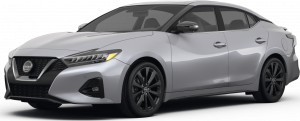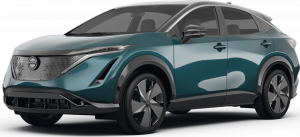Learn about Hybrid and Electric Engines
Hybrid or Electric...
Which Should I Choose?

Hybrid engine Vs Electric engine
For a long time, the only point of differentiation between auto engines was in the car engine type; diesel or gas. Now, the world is moving towards creating sustainable technologies that combust efficiently and sustainably while carefully considering our effect on the environment. Automotive fuel companies and car manufacturers around the world are pressed to create innovative solutions to reduce the dependence upon fossil fuels.
A number of customers are also viewing this new trend as a novel way of contributing towards reducing their carbon footprint.
What are Electric vehicles and how do they work?
There are major concerns looming on the sustainability and plausibility of fossil fuels as the fuels for the automotive industry. The impact of combustion engines on the environment is severely detrimental. The world is slowly realising the importance of other alternative forms of energy to run cars. Electric vehicles have emerged as a preferred option. An electric vehicle uses an electric battery to move, thus helping in reducing the massive carbon footprint caused on the environment by the use of vehicles that combust fossil fuels to run.
The most profound components of an electronic vehicle are:
They are the essential source of power in the vehicle. Usually, under the vehicular body or the trunk of the vehicle, the battery is the essential lifeblood in an electric vehicle.
The controller procures power generated by the batteries and converts the power from the battery into a current. This current is then further transmitted to the motor as a current which propels the car into action.
The motor in an electric car uses the resultant energy generated by the controller, all the way to the motor, and is responsible for propelling the car into motion. Different kinds of vehicles make use of different mechanisms of technology to optimize the power.
The automatic start and stop technology mechanism immediately switches the engine off when the car halts. The engine is automatically restarted upon engaging the accelerator. This is an extremely prudent and efficient mechanism which saves energy and leads to minimum wasteful energy expenditure.
Regenerative braking is based on the principle of re-capturing the energy which is lost in the process of applying brakes.
What is a hybrid car?
In the simplest of words, a hybrid car combines one or multiple electric motors with a gasoline engine. The energy produced from the amalgamation of the two mechanisms is used to propel the car. Whereas the regenerative system works by harnessing the wasted energy, the plugin system requires you to actually charge the vehicle.
Plugin hybrid technology: exactly as the name suggest, hybrid cars are those cars that can be plugged in. The plugin cars use two different kinds of powertrains to propel the wheels of the vehicle. An electric motor allows the drivers to drive the car up to a small distance of about 18 to 25 miles. In this technology, a gasoline engine starts working as soon as the hybrid engine gives up.
At times, it is the motor within the hybrid car that does most of the work, and at other times it is the gas engine that works in unison with the motor generating energy collectively. However, the result of both the processes is that the amount of gasoline required is considerably less, making hybrid cars the most viable energy saving alternative that we have developed so far. Therefore, hybrid cars have greater fuel economy for gasoline.
Electric power also enhances the performance of the vehicle and therefore the driving experience. The electricity comes from a battery. This battery is nothing like that common 12-volt battery which is generally used in cars. The battery gets replenished by capturing energy which is scattered through deceleration. This works on the principle of harnessing the energy created by the brakes, which gets lost to heat. This is how a typical regenerative braking system works.
Hybrid cars also use a gas engine to restore (charge) and maintain the battery of the car. Different automotive companies use different designs to create varying hybrid features that range from maintaining the highest level of fuel efficiency, to helping in keeping the cost of the vehicle as low as possible.
The differences between Electric And Hybrid
There are predominantly 3 types of vehicles based on the background power source.
Electric Vehicles:
Battery electric vehicles or electric vehicles come installed with restorable or rechargeable batteries. One can restore these battery packs using sources of external power. Furthermore, depending upon the efficiency of the charging mechanisms as well as their speed, the Electric Vehicle chargers can be divided into different categories; Level 1, 2, 3 and fast charging.
The type of charging can also vary as per the model of the electric vehicle. Here is a closer look at the different charging standards depending upon the varying levels of charging:
A Level 1 type charging unit uses a simple mechanism to charge the battery. The system includes a simple outlet with a 120 volts power capacity. This kind of a charger lets you charge an Electric Vehicle sufficiently within a short period of about 7 hours to be able to cover about 80 miles. These chargers have been found to function with most electric vehicles out there.
These systems have a relatively greater output of about 240 Volts. They are usually found at fuel stations. A level 2 charging system can restore an electric vehicle in 4 hours that can make the vehicle run 85-90 miles on an average.
Level-3 variant of charging mechanisms are the most time saving alternatives of charging solutions in the category. They can charge an electric vehicle to run efficiently for about 90 miles in about 30 minutes.


















